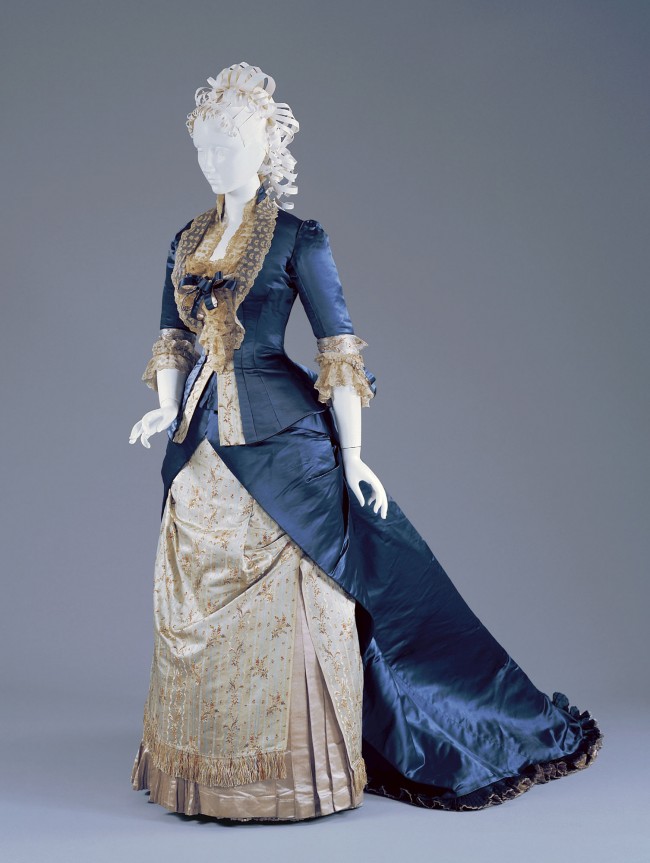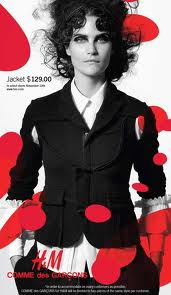Fashion: Visual Culture Front and Center
Cynthia Amnéus
In 2011 the Metropolitan Museum of Art’s exhibition Savage Beauty, celebrating the work of fashion designer Alexander McQueen, became a sensation attracting over 650,000 visitors. I had the privilege of seeing the show sans the crowds as a colleague at the Costume Institute escorted me in before the galleries were open to the public. The exhibition was organized in great part from the McQueen archives and the installation of each collection was fabricated with generous input from McQueen’s artistic staff and based on the original runway sets. The exhibition was hauntingly beautiful and a fitting homage to McQueen who had committed suicide just one year earlier.

Mc Queen was a master of his craft not only technically, but aesthetically. His materials were often unconventional and lavishly embellished. His garments were sculptural on the body. His collections were controversial in their themes and avant-garde in their presentation. But so much has been written about this exhibition and McQueen that I need not add to the plethora. What interested me was the astonishment with which the press regarded the phenomenal attendance to this exhibition. From my point of view, McQueen was one of the most important designers of our time, making the exhibition a must-see show. The inclusion of so many of his ground-breaking creations would have drawn a sizeable crowd all on their own, but it seemed to me that his recent, rather sensational and certainly unexpected, death fanned the flames of interest exponentially, resulting in the record-breaking numbers.

After the exhibition closed, the media seemed simply astounded that a fashion exhibition could rival, or even surpass, attendance for the usual blockbuster such as an Impressionist painting show. It seemed mind-boggling that fashion – generally considered a minor commercial art – could draw such a crowd. There was a sense that we had turned a corner and fashion was suddenly, and uncharacteristically, front and center in our visual culture.
Perhaps because I work with fashion on a daily basis, this puzzled me because fashion is in front of us all the time. Fashion is larger than life in the advertisement at the bus stop. It is on the cover of almost any gender specific or celebrity-focused magazine on every news stand. It is what we grab from our closet after stumbling out of the shower every morning. Good or bad, high end or not, it is what we wear every day.
This attentiveness to fashion, however, is not new. In the nineteenth century, for example, fashionable dress was a measure not only of one’s social status, but moral standing. Every woman in this period, whether in an urban or rural setting, wished to dress fashionably. An individual’s appearance, including their dress, was regarded as an index of their character. Regardless of wealth, a woman of high moral disposition was expected to clothe herself and her family respectably. Dressing fashionably was not a privilege for the upper class; it was a requirement for all women. Those who were not successful in this endeavor were considered deficient.
While those with limited means could not afford sumptuous fabrics or luxurious embellishments, they could amend their dress as styles changed. The bare bones of new trends, such as the set of the sleeve, the cut of the bodice, or the fullness of the skirt, were observed and adapted by middle and lower class women who endeavored to be as stylish as they could manage. Even girls who worked for a pittance in the textile mills of the northeast, read the latest issues of Godey’s Lady’s Book and had their finger on the pulse of fashion trends.

While we would like to think that this correlation between fashion and character judgment has relaxed in the twenty-first century, the Trayvon Martin case reminds us that appearance continues to affect our perception of an individual. A young black man in a hoodie is suspect. Dress continues to be a primary means by which we evaluate a person we are meeting for the first time. Are they dressed well? Are they dressed appropriately for the setting? Wearing jeans to the symphony or opera, even in Cincinnati, is lamented and considered improper.
Once a year over 40 million viewers watch the Oscars broadcast. If you ask most women, they would probably confess that the main reason they watch the program is to see the gowns. The hour-long pre-show has become a major production in and of itself and the primary question to both male and female celebrities is, “Who are you wearing?” The following day the media, and women around the proverbial water cooler, scrutinize and criticize what every star wore.
The adulation of film stars and their dress is nothing new. Early female stars’ wardrobes, both on and off the screen, were controlled by the studios to insure a consistently glamorous look. In the 1930s, movie magazines advertized dress patterns, allowing the home sewer to whip up their favorite film style and chains like The Cinema Shop offered copies of gowns from specific movies at affordable prices. Women of limited means were not to be denied their brush with fame and glamour. High end fashion is entrancing for a great majority of women and a growing segment of the male population. Today, this trickle down of fashion to the middle class is promoted by chains like Target and H&M collaborating with some of today’s most respected fashion designers to create one-off signature collections. Rei Kawakubo, Zac Posen, Karl Lagerfeld, and Viktor and Rolf have all participated in availing those who cannot afford high end fashion with a diluted, but affordable, version. These collections sell out immediately by shoppers who line up outside the store hours before. The hoi polloi want to connect with the glamour of the fashion world. Just like brides dream about wearing a once-in-a-lifetime princess gown, women aspire to wearing designer clothing. If owning a Comme des Garçons for H&M is the best we can do, we will take it.

Fashion is constantly around us on every level. It draws the crowds because it connects us all on basic levels. It is visual, it is tactile, it is cultural, it is personal. It is something most, if not everyone, can relate to or have an opinion about because we all wear clothes. We all make that choice every single morning.
awesome piece
awesome piece
thank you!
thank you!